
Official Edgar Rice Burroughs Tribute Site Since 1996 ~ Over 15,000 Webpages and Webzines in Archive Volume 1153 |

Official Edgar Rice Burroughs Tribute Site Since 1996 ~ Over 15,000 Webpages and Webzines in Archive Volume 1153 |
![]()
ERB References for the
THE APACHE NOVELS I
The War Chief ~ The Apache
Devil
![]()
Source: The
ERB Personal Library Collection
![]()
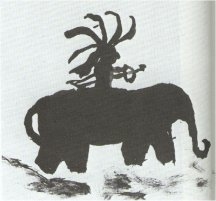
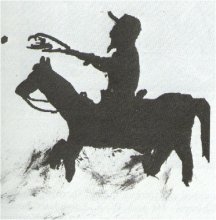
Some of the first sketches done
by a very young Eddie Burroughs
Indian with headdress on an elephant
~ Cavalry Officer on a horse
|
SOURCES OF BACKGROUND INFORMATION IN ERB'S APACHE NOVELS Burroughs drew upon his personal experiences from when he served as a trooper with the U.S. 7th Cavalry at Fort Grant, Arizona. He also cited the following books
and periodicals
The Marvellous Country: Three Years in Arizona and New Mexico, the Apache's Home by Samuel Woodworth Cozzens 1873 |
|
Ref: ERB Bio TimeLine in ERBzine: Chapter 1875-1899  May 13, 1896: Ed travels to Detroit to enlist in the army. Three and a half months shy of 21 he was caught lying about this age... but his father followed up with a letter of permission. |
|
|
The Marvelous Country: Three Years in Arizona and New Mexioc, the
Apache's Home ~ 1873 Shepard and Gill, Boston. 548 pages.
Cited
by ERB as reference material for his Apache novels
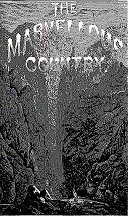 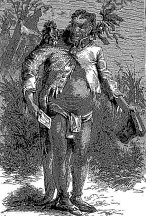
Contains near-death experiences. ERB cites this as one of the reference books he used in the writing of his Apache novels. An authentic history of this wonderful country and its ancient civilization ... together with a full and complete history of the Apache tribe of Indians. Illustrated by more than one hundred engravings.
OTHER BOOKS BY THE SAME AUTHOR BUT NOT FOUND IN ERB'S LIBRARY:
|
| Samuel Cozzens author, born in Marblehead, Massachusetts, 14
April, 1834; died in Thomaston, Georgia, 4 November, 1878. He was a lawyer,
and for a time United States district judge of Arizona. His published works
include" The Marvellous Country" (Boston, 1876); "The Young Trail-Hunters
Series," comprising "The Young Trail-Hunters," "Crossing the Quicksands,"
and "The Young Silver-Seekers" (1876 et seq.); and "Nobody's Husband" (1878).
~ www.famousamericans.net
Cozzens visited New Mexico and Arizona barely in time to see new US Territories acquired in the Mexican War as they'd never be again. The Apache was more-or-less at peace with the white men. The Texas Confederates hadn't yet campaigned up the Rio Grande, causing Arizona to become a major conduit for men and materials. Gold hadn't yet been discovered in either of the two territories.Cozzens visited Tuscon, Tubac, Sacaton, Mesilla, Acoma, Laguna and Zuni at a time when they were still new from the US perspective. His descriptions of the people, the places and the times are well worth reading again and again. A grizzly bear attacks their mule in the Zuni Mountains. It must have been one of the last opportunities a mule had in New Mexico for such an experience. The book is loaded with that sort of thing. ~ Amazon.com |
|
|
Thrilling Days in Army Life ~ 1900
~ Describes one of the classic encounters between Indians and the frontier
army known to history as the Battle of Beecher Island. ~ Cited by
ERB as reference material for his Apache novels
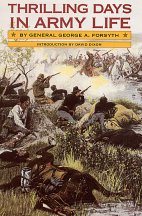
Later Edition ~ Bison Books OTHER: A Frontier Fight ~ Harpers Magazine (1895) The Story of the Soldier (1900) Thrilling Days of Army Life (1902). |
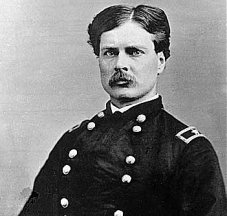 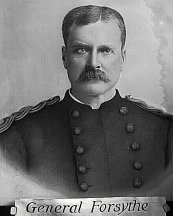 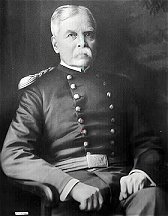
General George A. Forsyth Thrilling Days in Army Life describes one of the classic encounters between Indians and the frontier army. In the summer of 1868 George A. Forsyth led fifty scouts to search out Cheyennes who were raiding Kansas. In this book, he relates the six-day siege in september that pitted his small force against 750 Cheyennes and Sioux. Because the battle occurred in a dry bed of the Arickaree Fork of the Republican River in western Colorado and claimed the life of Forsyth's brave lieutenant, Frederick Beecher, it would be known to history as the Battle of Beecher Island. Forsyth, who was breveted brigadier general for the 1868 battle, had an action-packed career. In 1882, as commander of the Fourth Cavalry in New Mexico, he pursued the Chiricahua Apaches across the border into Mexico. It was a raid full of dangerous traps, but he lived to tell about it. Originally published in 1900, Thrilling Days in Army Life will be of interest to both frontier and Civil War buffs. Forsyth was an aid to Major General Philip H. Sheridan in 1864 and accompanied him on the dramatic ride to the rescue of Union troops at Cedar Creek. That episode is presented in a rush of detail. Forsyth ends with an eyewitness account of the surrender of the Confederacy at Appomattox Court House. Of special interest to readers will be the many drawings by Rufus Zogbaum, a leading military artist of his day. Introducing this Bison Book edition of Thrilling Days in Army Life is David Dixon, an assistant professor of history at Slippery Rock University and the author of Hero of Beecher Island: The Life and Military Career of George A. Forsyth, also available from the University of Nebraska Press. Forsyth was born November 7, 1837 at Muncy, Pennsylvania, he enlisted as a Private in the Chicago Dragoons in April 1861 and in September was appointed First Lieutenant in the 8th Illinois Volunteer Cavalry. Throughout the Civil War, he served with the Army of West Virginia, the Army of the Potomac and the Army of the Shenandoah. He was advanced to Captain in February 1862, Major in September 1863, Brevet Colonel, October 1864, for gallantry at Opequon and Winchester and Brevet Brigadier General for services in the Army in March 1865. He was mustered out of the volunteer service in March 1865. In July 1865 he was appointed Major of the 9th U.S. Cavalry. In 1867 he received brevets in the regular service to Lieutenant Colonel and Colonel for actions in the Civil War at Dinwiddie Court House and Five Forks. From 1866 he was continuously on Frontier duty.
|
|
|
| Lives of Famous Indian Chiefs ~ 1906 Aurora, IL: American Indian
Historical Publishing Co.
Cited by ERB as a resource used in his writing of the Apache novels Excerpt: Red Jacket vs. Christianity |
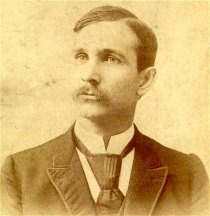
Rev. Norman B. Wood |
|
|
| The Frontier Trail: A Personal Narrative by Col. Homer W. Wheeler:
Famous Frontiersman ~ 1923 ~ Los Angeles Times-Mirror Press
~ 334 pages ~ An Authentic Narrative of 43 Years in the Old West as Cattleman,
Indiand Fighter ? Army Officer/Introduction by Major General James Harbord,
Ass. Chief of Staff ~ Illus. with 15 plates, most from photographs, 1 from
painting by Charles M. Russell, 1 from painting by E.W. Deming
Cited by ERB as reference material for his Apache novels OTHER: Buffalo Days: The Personal Narrative of a Cattleman, Indian Fighter ? Army Officer ~ reprinted by Nebraska University Press |
| According to Colonel
Homer W. Wheeler, an officer who fought with the United States' Fifth
and Eleventh Cavalry for 35 years and who lived to write about his expeditions
out West, "Millions of Buffalo were slaughtered for the hides and meat,
principally for the hide. Some of the expert hunters made considerable
money at that occupation. . . . "Buffalo hunting was dangerous sport. Although
at times it looked like murder, if you took a buffalo in his native element
he had plenty of courage and would fight tenaciously for His life if given
an opportunity. Like all other animals, the buffalo scented danger at a
distance and tried to escape by running away, but if he did not escape
he would make a stand and fight to the last, for which every one must respect
him. Some of the habits of the Buffalo herds are clearly fixed in my memory.
The bulls were always found on the outer edge, supposedly acting as protectors
to the cows and calves. For ten to twenty miles one would often see solid
herds of the animals. Until the hunters commenced to kill them off, their
only enemies were the wolves and coyotes. A medium-sized herd, at that
time, dotted the prairie for hundreds of miles, and to guess at the number
in a herd was like trying to compute the grains of wheat in a granary.
"The stupidity of the buffalo was remarkable. When one of their number
was killed the rest of the herd, smelling the blood, would become excited,
but instead of stampeding would gather around the dead buffalo, pawing,
bellowing and hooking it viciously. Taking advantage of this well-known
habit of the creature, the hunter would kill one animal and then wipe out
almost the entire herd." (Buffalo Days, pp 80-82.)
http://www.american.edu/TED/ice/buffalo.htm |
|
|
||
The Land of Poco Tiempo ~ New Mexico ~ 1893 ~ NY: Charles Scribner's
Sons ~ 310 pages ~ 38 illustrations, including some of the earliest photographs
ever recorded of Penitente ceremonies.
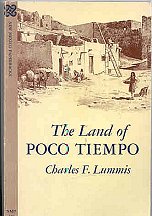 Charles F.
Lummis's The Land of Poco Tiempo is the story of New Mexico as Lummis
found it when he moved to the territory in 1888 to recover his health.
As Lummis translates the Spanish title, “poco tiempo” means “pretty soon”
the phrase expresses the lack of haste in the lives of the area's inhabitants.
Lummis, who had suffered a stroke because of his high-pressure job in Los
Angeles, appreciated this attitude. Lummis's account ranges from Indian
ruins in chapters such as “Cities That Were Forgotten” and “The Wanderings
of Cochiti,” to contemporary Native Americans in “The Apache Warrior” and
“The City in the Sky” (the latter treating Acoma Pueblo), and, most controversially,
to “The Penitent Brothers”. This chapter tells of the author's visit to
the tiny village of San Mateo, New Mexico, during Holy Week of 1891, where
he witnessed and photographed a re-enactment of Christ's crucifixion by
a local religious group, Los Hermanos Penitentes , or “the Penitent Brothers”.
The Protestant author sensationalized the self-flagellation and the mock
crucifixion which he witnessed, and the chapter offended many local readers.
Lummis was a pioneer photographer, employing a heavy view camera which
used glass plates. His photographs, which tell the literal truth about
the 1890s more closely than his words, illustrate this book perfectly. Charles F.
Lummis's The Land of Poco Tiempo is the story of New Mexico as Lummis
found it when he moved to the territory in 1888 to recover his health.
As Lummis translates the Spanish title, “poco tiempo” means “pretty soon”
the phrase expresses the lack of haste in the lives of the area's inhabitants.
Lummis, who had suffered a stroke because of his high-pressure job in Los
Angeles, appreciated this attitude. Lummis's account ranges from Indian
ruins in chapters such as “Cities That Were Forgotten” and “The Wanderings
of Cochiti,” to contemporary Native Americans in “The Apache Warrior” and
“The City in the Sky” (the latter treating Acoma Pueblo), and, most controversially,
to “The Penitent Brothers”. This chapter tells of the author's visit to
the tiny village of San Mateo, New Mexico, during Holy Week of 1891, where
he witnessed and photographed a re-enactment of Christ's crucifixion by
a local religious group, Los Hermanos Penitentes , or “the Penitent Brothers”.
The Protestant author sensationalized the self-flagellation and the mock
crucifixion which he witnessed, and the chapter offended many local readers.
Lummis was a pioneer photographer, employing a heavy view camera which
used glass plates. His photographs, which tell the literal truth about
the 1890s more closely than his words, illustrate this book perfectly.
 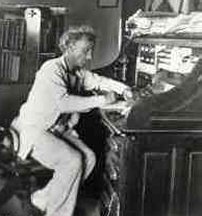 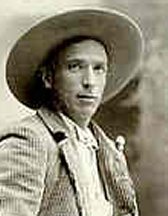 Some Strange Corners of Our Country: The Wonderland of the Southwest Letters from the Southwest Man Who Married the Moon and Other Pueblo Indian Folk Tales Delight Makers: A Novel of Prehistoric Pueblo Indians My Friend Will A Tramp Across the Continent ~ 1892 ~ reprinted by the University of Nebraska Press Charles F. Lummis's A Tramp Across the Continent is the story of the author's walk from Cleveland, Ohio, to Los Angeles, California, between September 1884 and February 1885. Originally published as a series of weekly columns in the Los Angeles Daily Times , the account was revised into book form in 1891-1892 while the author recovered from a serious illness. While the book covers the entire walk, most of its pages are devoted to southern Colorado, New Mexico, Arizona, and California. Lummis conveys to his audience his own sense of wonder at encountering for the first time the wonders of the American Southwest--prehistoric Indian ruins, contemporary Native Americans, Mexican Americans, and the flora, fauna, and spectacular landscape of a region that was little known to readers of his day. But the book is more than a simple guidebook. Lummis, a Harvard-educated New Englander, shows the prejudices he had to overcome. In doing so, he hoped to create a sympathetic attitude toward cultures and customs other than their own in his Anglo-American readers. Mesa, Canyon and Pueblo ~ 1925 Mesa, Canyon and Pueblo is considered the finest work of southwestern writer and photographer Charles F. Lummis. A thorough revision of his earlier study of New Mexico, Arizona, and southern California, Some Strange Corners of Our Country (1892), Mesa, Canyon and Pueblo examines the geography, history, and population of the region with an eye to their picturesque details. Geographical features such as the Grand Canyon and the Petrified Forest are treated both from the viewpoint of science and for their effect on the human imagination. Lummis traces mankind's relationship with the Grand Canyon from the earliest Indian settlements, evident in prehistoric ruins, through exploration by Spanish missionaries and the scientific expeditions of John Wesley Powell. He also writes of natural wonders that are significant mainly because of the history and legends of the region's inhabitants, places such as Inscription Rock in western New Mexico, which bears etchings from prehistoric petroglyphs to notations by early American military expeditions. In two chapters on Acoma Pueblo, the “City in the Sky,” Lummis tells the history of the pueblo as it has been recorded by both Indian oral accounts and early Spanish histories. He also describes the modern pueblo of the 1920s with the care of a professional ethnographer. Lummis then retells and attempts to document with scientific evidence the legend of the Acoma tribe's earlier settlement of a nearby mesa, a geological twin to the mesa that is their current home. This involved climbing, examining, and photographing the supposedly unclimbable mesa. Lummis was a sympathetic interpreter of the early inhabitants of the Southwest. At a time when Geronimo was viewed as the scourge of the area, Lummis wrote admiringly of Apache warriors. He defended the ancient civilizations of the pueblo Indians by contrasting them with the early New England settlements, and he defended the Mexican American population from charges that it was ignorant and shiftless. As an introduction to the American Southwest, Mesa, Canyon and Pueblo must still be considered a key book by one of its most perceptive interpreters. Ref Links and Online eText Sources for Lummis articles and poems
The Lummis / Harrison Gray Otis / Burroughs Connection 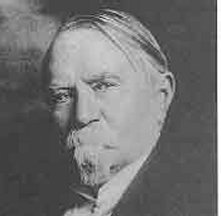 Harrison
Gray Otis, legendary editor and publisher of the Los Angeles Times
hired Lummis to work as a reporter for the Times on the day he completed
his 3,507-mile walk from Cincinnati to Los Angeles. Interestingly, it was
the Otis estate in the San Fernando Valley that Ed Burroughs would purchase
and rename Tarzana Ranch in 1919. Otis was widely regarded as a tyrannical
bully who often used underhanded tactics and the pages of his newspaper
to unfairly attack and undermine his opponents. In fact, Theodore Roosevelt,
is quoted as saying that Otis "is a consistent enemy of men in California
who have dared resolutely to stand against corruption and in favor of honesty."
It is not surprising then that Lummis was given the assignment of defending
and whitewashing the character and public service record of the city's
corrupt police chief, Edward McCarthy, in the pages of the Times. Despite
the great waves of antagonism toward Otis, he and his popular new journalist
were a strong voice in preaching tolerance of Chinese immigrants and black
laborers. The Times was also a powerful influence in the taming and civilizing
the "wild west" city of Los Angeles in the late 19th century. Harrison
Gray Otis, legendary editor and publisher of the Los Angeles Times
hired Lummis to work as a reporter for the Times on the day he completed
his 3,507-mile walk from Cincinnati to Los Angeles. Interestingly, it was
the Otis estate in the San Fernando Valley that Ed Burroughs would purchase
and rename Tarzana Ranch in 1919. Otis was widely regarded as a tyrannical
bully who often used underhanded tactics and the pages of his newspaper
to unfairly attack and undermine his opponents. In fact, Theodore Roosevelt,
is quoted as saying that Otis "is a consistent enemy of men in California
who have dared resolutely to stand against corruption and in favor of honesty."
It is not surprising then that Lummis was given the assignment of defending
and whitewashing the character and public service record of the city's
corrupt police chief, Edward McCarthy, in the pages of the Times. Despite
the great waves of antagonism toward Otis, he and his popular new journalist
were a strong voice in preaching tolerance of Chinese immigrants and black
laborers. The Times was also a powerful influence in the taming and civilizing
the "wild west" city of Los Angeles in the late 19th century. |
||
| Charles Fletcher Lummis, in 1884, he walked from Ohio to California
in a pair of knickerbockers and street shoes to take a job as a reporter
for the Los Angeles Times. He gained a national following with weekly
letters about his escapades along the way. A New England Yankee by
birth, he gained a deep appreciation for both the natural beauty and cultural
diversity of the Southwest, where he remained for the rest of his life.
Lummis almost always attired in his trademark well-worn, dark green, Spanish-style
corduroy suit, soiled sombrero and red Navajo sash, went on to become one
of the most famous and colorful personalities of his day as a book author,
magazine editor, archaeologist, preserver of Spanish missions, advisor
to President Theodore Roosevelt and a crusader for civil rights for American
Indians, Hispanics and other minority groups. He was open and
accepting of all people, flamboyent, bombastic and an asset to the development
of Los Angeles, its library, the Southwest Museum and the peaceful relocation
of the native Americans to reservations. (He had been appointed to that
task by his Harvard classmate, Teddy Roosevelt.) A new biography
of Lummis, American Character, was published in the spring of 2001.
Publisher's Weekly called it "a compulsively engaging and spirited
biography of a man as colorful as he was influential."
Charles
F. Lummis brought the American Southwest (New Mexico, Arizona, and
California) to the attention of the reading public during the last decade
of the nineteenth century and the first three decades of the twentieth
century. Folklorist, journalist, editor, and photographer, Lummis sought
to popularize travel in the region and to bring to his readers an appeciation
of the varied ethnic cultures of the area. After growing up in Massachusetts
and attending Harvard, which he left without taking a degree, Lummis moved
to Ohio, where he edited a weekly newspaper. In 1884 he accepted the post
of city editor of the Los Angeles, California Daily Times . He began his
duties for that paper by recording his 3500-mile walking trip from Ohio
to California in a series of weekly columns for the newspaper. These became
the basis for one of his best-known books, A Tramp Across the Continent
. In 1887 Lummis suffered a stroke and became partially paralyzed. He moved
to New Mexico and lived the vigorous life propounded by his Harvard classmate,
Theodore Roosevelt. He traveled throughout the territory on horseback,
joined archeological expeditions, and began to work as a free-lance writer.
It was during this time that he revised his columns into A Tramp Across
the Continent (1892) and wrote The Land of Poco Tiempo (1893) and Some
Strange Corners of Our Country (1892). The latter book, much revised and
enlarged, would become Lummis's masterpiece, Mesa, Canyon and Pueblo (1925).
Eventually he regained the use of his left arm and returned to southern
California. While he published fiction ( The Gold Fish of Gran Chimu )
and poetry ( A Bronco Pegasus ), Lummis's main contributions were his accurate
portraits of the land he loved. He befriended Mexican Americans and Native
Americans and interpreted their ways to a nation that had seen these peoples
as mere obstacles in the way of the doctrine of Manifest Destiny. As he
summed up his own career, “My pen is very little good without my legs.
I must run and see or I've got nothing to write about.”
Apostle of the Southwest From the Obituary that appeared
in the New York Times, November 1928:
Web Ref: The Charles Lummis
Website
|
|
|
|
Captain Bourke's Influence On the Border with Crook |
Text and Illustrations ERB References |
Scrapbook: Art and Photos Indian Wars and Apaches |
Apache 3-D Photos 28 Stereoviews |
|
ERB C.H.A.S.E.R.: THE WAR CHIEF ERB C.H.A.S.E.R.: APACHE DEVIL Robert "Tarak" Woodley Discusses The War Chief (an ERBapa reprint) ERB Time Line Bio |
![]()

![]()
![]()

![]()
BILL
HILLMAN
Visit
our thousands of other sites at:
BILL
AND SUE-ON HILLMAN ECLECTIC STUDIO
ERB
Text, ERB Images and Tarzan® are ©Edgar Rice Burroughs, Inc.-
All Rights Reserved.
All
Original Work ©1996-2004/2012/2018 by Bill Hillman and/or Contributing
Authors/Owners
No
part of this web site may be reproduced without permission from the respective
owners.